 28
28
Kingston Fury Renegade G5 2 TB Review
Windows 11 Startup, Virtualization & File Compression »Thermal Throttling
Due to the compact form factor, M.2 drives lack the ability to actively cool themselves, usually having to rely on passive airflow instead. All vendors include some form of thermal throttling on their drives as a safeguard, which limits throughput once a certain temperature is exceeded.On this page, we will investigate whether the tested drive has such a mechanism, how high temperatures get, and what effect this has on performance. We will test the drive in a typical case, installed in the M.2 slot between the CPU and VGA card, while it's getting hammered by non-stop incoming writes. A first test run, to create a baseline, shows temperature and performance with a 120 mm fan directly blowing on the tested drive. In a second run we report thermal performance of the completely uncooled drive. Each of the charts has time moving from left to right, with the blue line displaying transfer speed in MB/s and the red line showing the temperature in degrees Celsius (measured using SMART).
Results from this test setup are not comparable to our older SSD benches because we're using a different case and an AIO watercooling unit, so there's very little airflow inside the case.
Bare Drive with Heat Spreader
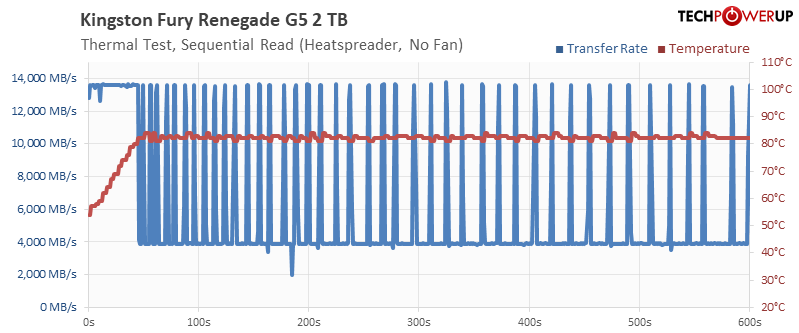
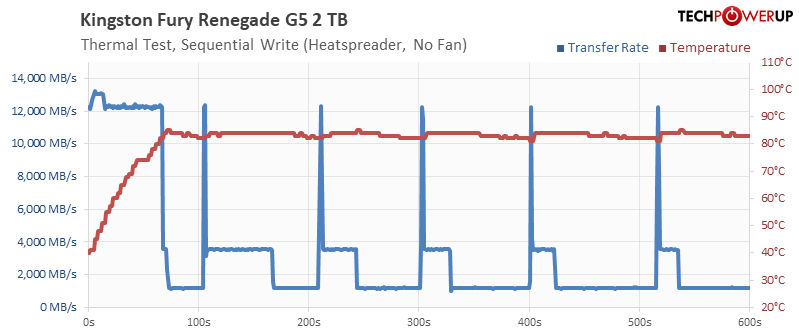
Kingston ships their drive with a thin heat spreader preinstalled, so I ran our first test like that, without any additional airflow. As you can see, the drive throttles fairly quickly. On the other hand, if you have only light workloads that last for just a few seconds, then throttling won't be an issue.
Drive with Thermalright Heatsink
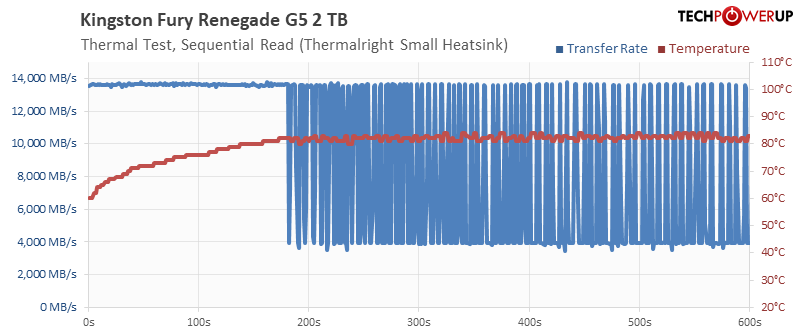
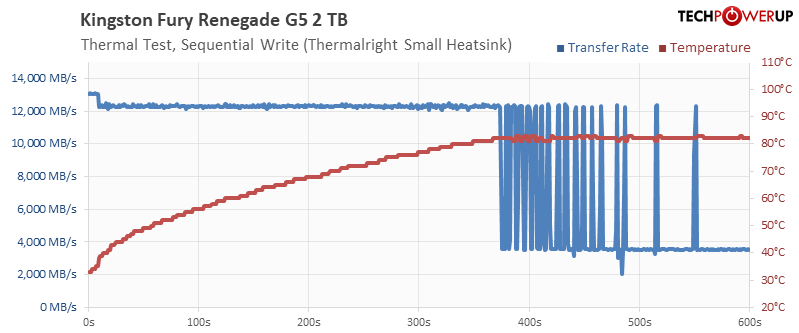
I also installed a Thermalright TR-M2, which is a compact full-metal heatsink. Still quite some throttling, but much better.
Drive with big Thermalright Heatsink
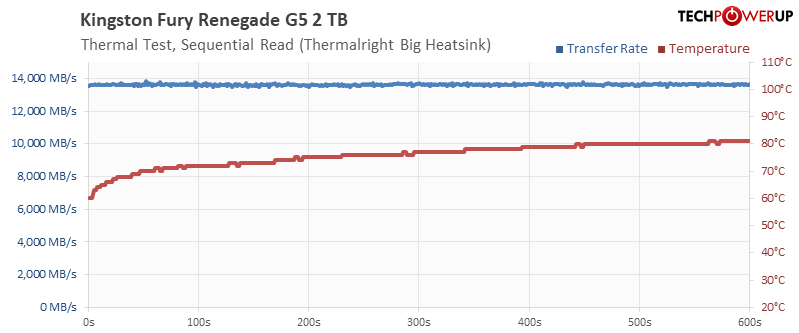
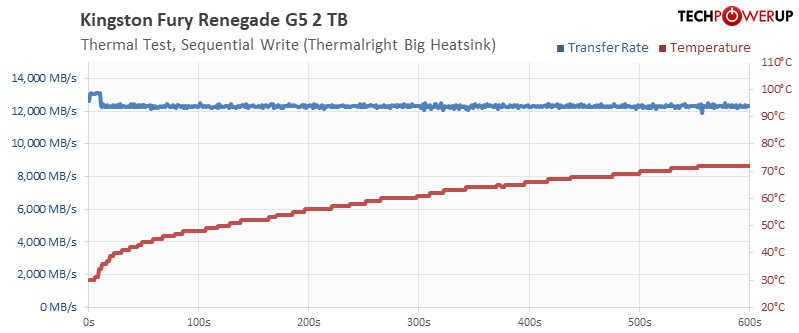
With the much bigger Thermalright HR-10, there is no more thermal throttling—which is an excellent result for a Gen 5 SSD.
Thermal Image & Hot Spot
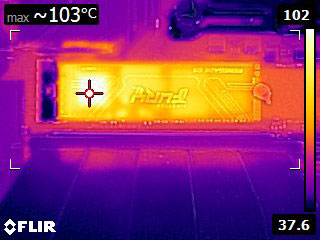
We recorded a thermal image of the running SSD as it was completing the write test. The surface temperature of the drive reached 103°C. This is much higher than what we see on the Acer Predator GM9000 and suggests that Kingston picked a higher thermal limit. This is perfectly reasonable and perfectly safe, the chip is designed to run at high temperatures without issues.
Jul 24th, 2025 21:41 CDT
change timezone
Latest GPU Drivers
New Forum Posts
- TPU's Nostalgic Hardware Club (20572)
- Your PC ATM (35545)
- RX7800XT Fan spins at max speed on boot (5)
- R9 7900X - 5070Ti - Lags / Stuttering (16)
- Last game you purchased? (870)
- What are you playing? (24003)
- Which Linux flavor? (55)
- Lexar NM790 (4TB) made my PC go back to Windows XP days, since it caused my PC to be SO slow and laggy! (23)
- Current Sales, Bundles, Giveaways (10348)
- What's your latest tech purchase? (24357)
Popular Reviews
- Noctua NF-A12x25 G2 PWM Fan Review
- MSI MPG B850I Edge Ti Wi-Fi Review
- UPERFECT UMax 24 Review
- Cougar OmnyX Review
- TerraMaster F4-424 Max Review - The fastest NAS we've tested so far
- Thermal Grizzly WireView Pro Review
- Sharkoon OfficePal C10 Review - Affordable and Decent
- VAXEE XE V2 Wireless Review
- Upcoming Hardware Launches 2025 (Updated May 2025)
- Razer Blade 16 (2025) Review - Thin, Light, Punchy, and Efficient
TPU on YouTube
Controversial News Posts
- Some Intel Nova Lake CPUs Rumored to Challenge AMD's 3D V-Cache in Desktop Gaming (140)
- AMD Radeon RX 9070 XT Gains 9% Performance at 1440p with Latest Driver, Beats RTX 5070 Ti (131)
- AMD's Upcoming UDNA / RDNA 5 GPU Could Feature 96 CUs and 384-bit Memory Bus (119)
- NVIDIA GeForce RTX 5080 SUPER Could Feature 24 GB Memory, Increased Power Limits (115)
- NVIDIA DLSS Transformer Cuts VRAM Usage by 20% (99)
- AMD Sampling Next-Gen Ryzen Desktop "Medusa Ridge," Sees Incremental IPC Upgrade, New cIOD (97)
- NVIDIA Becomes First Company Ever to Hit $4 Trillion Market-Cap (94)
- Windows 12 Delayed as Microsoft Prepares Windows 11 25H2 Update (92)